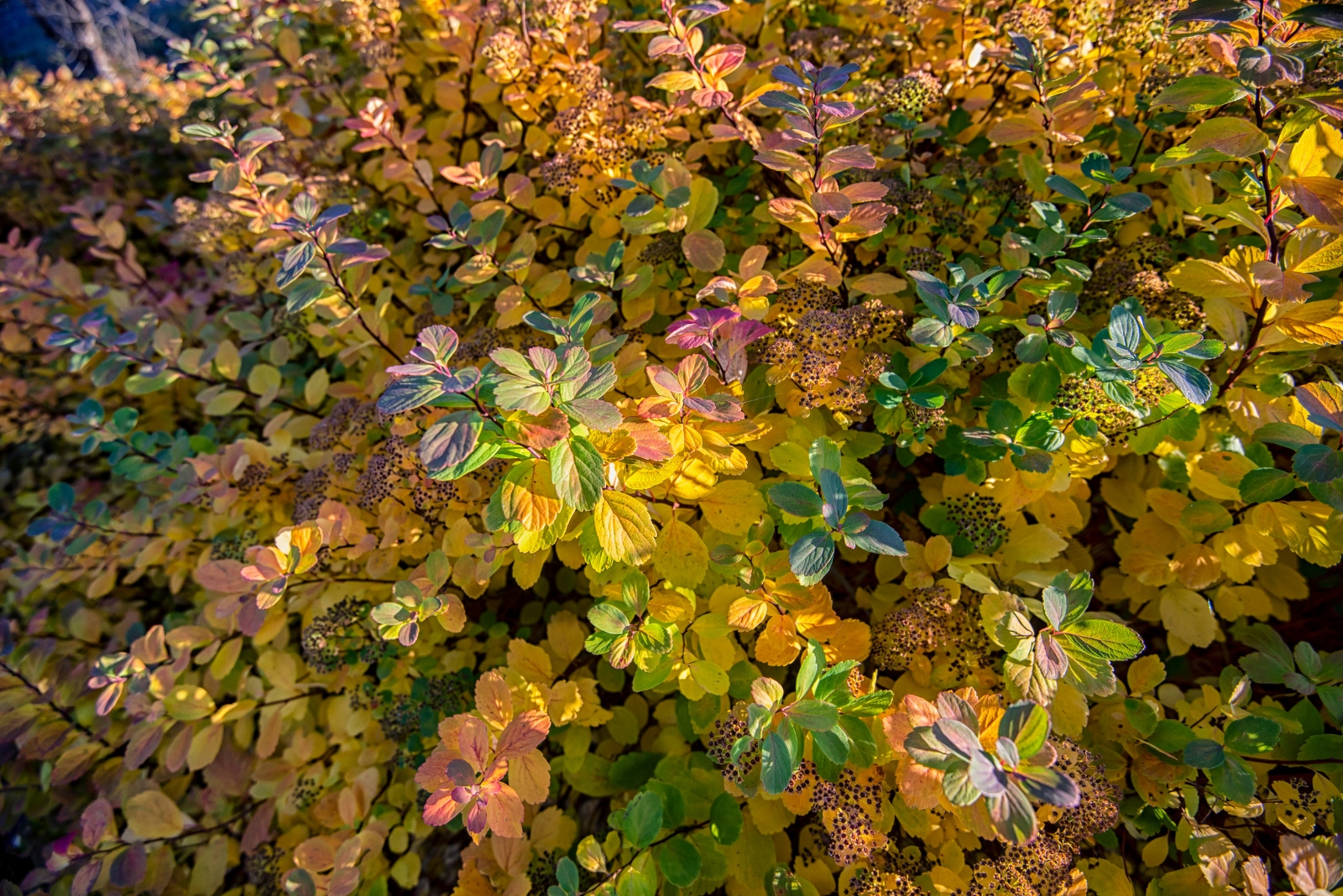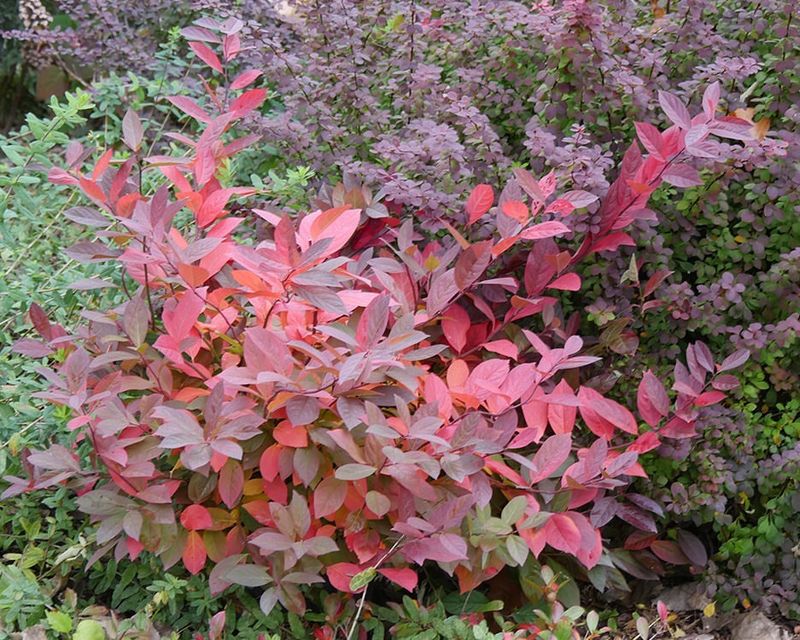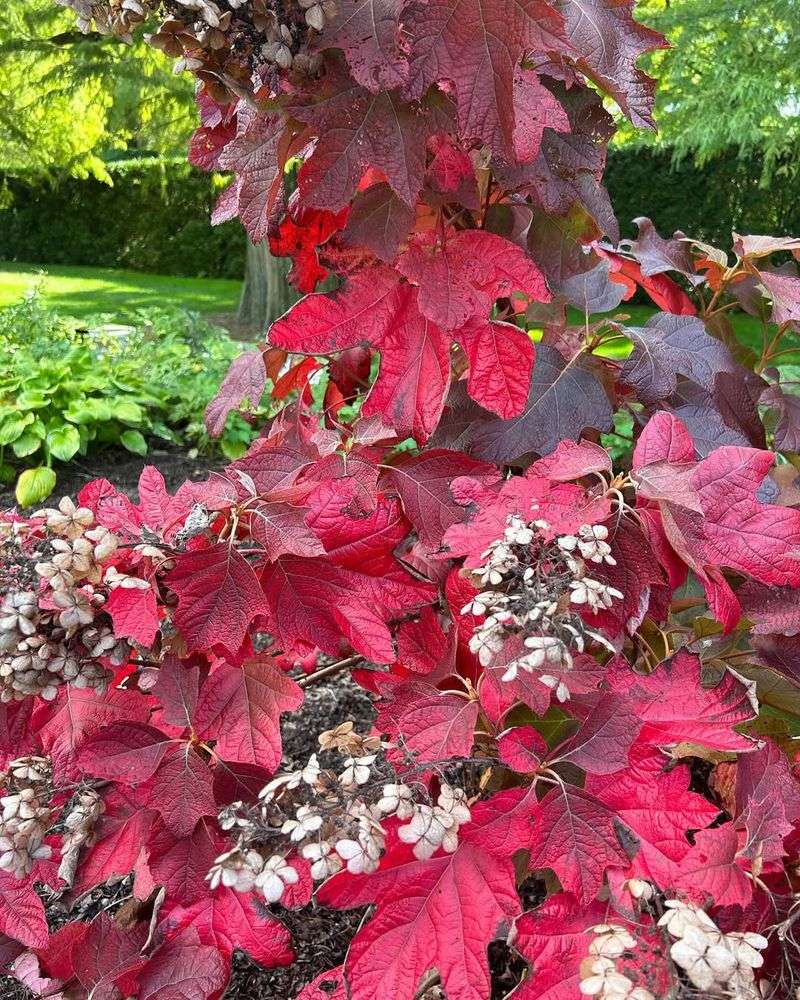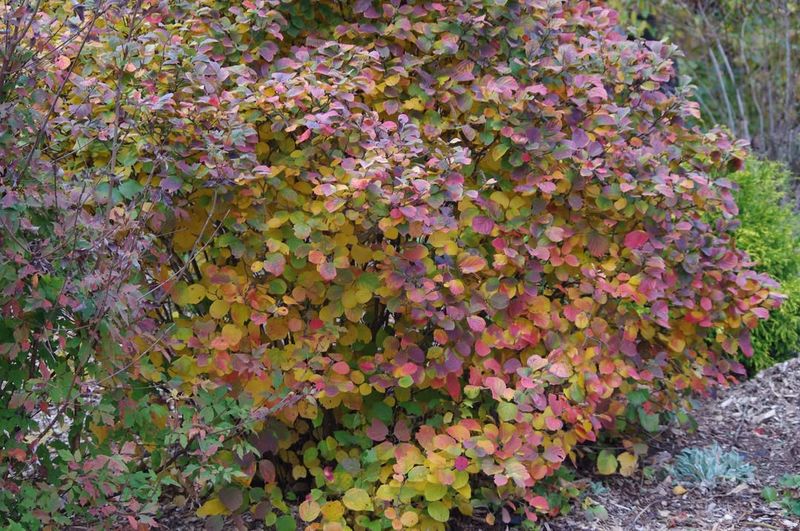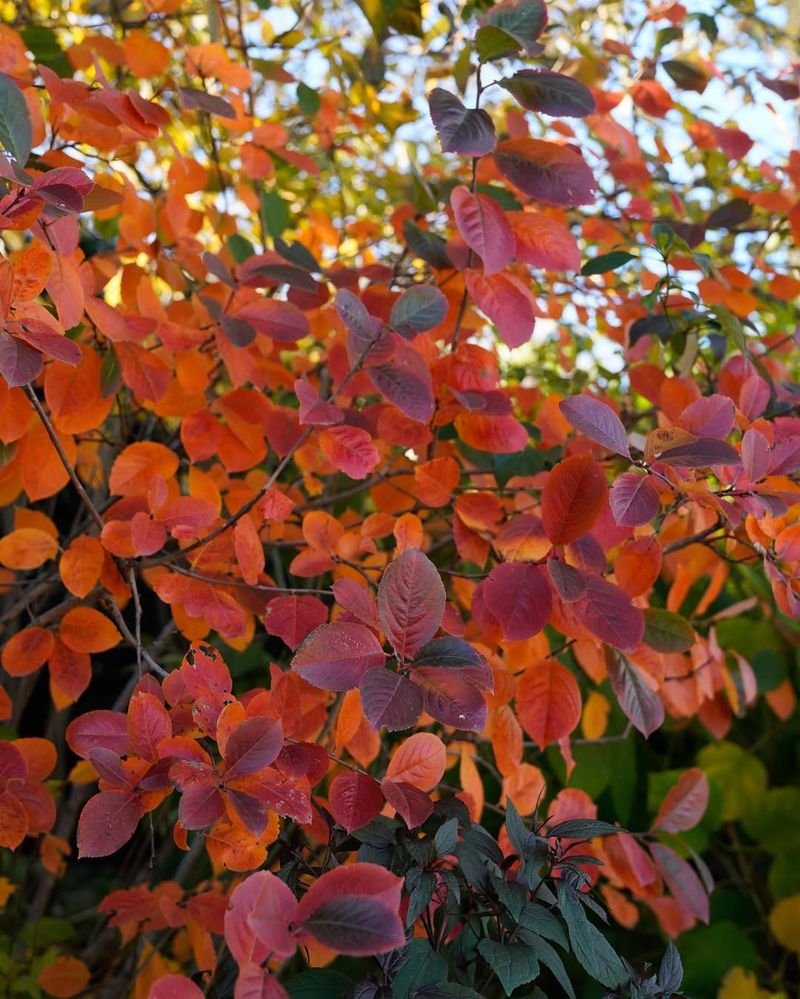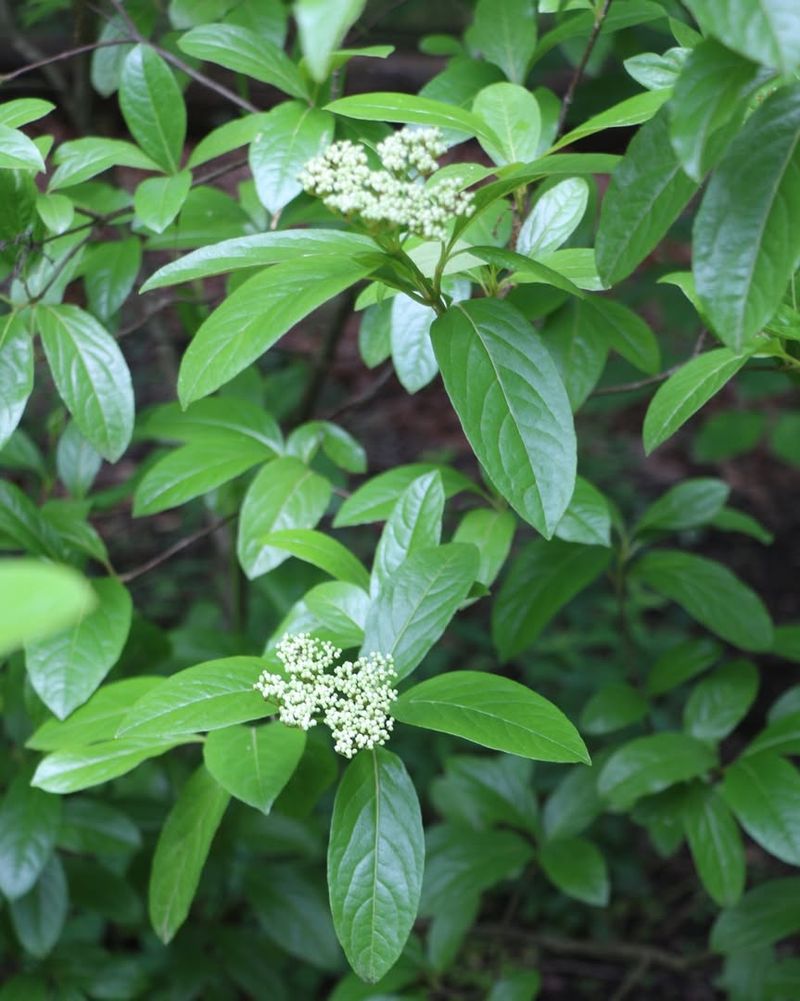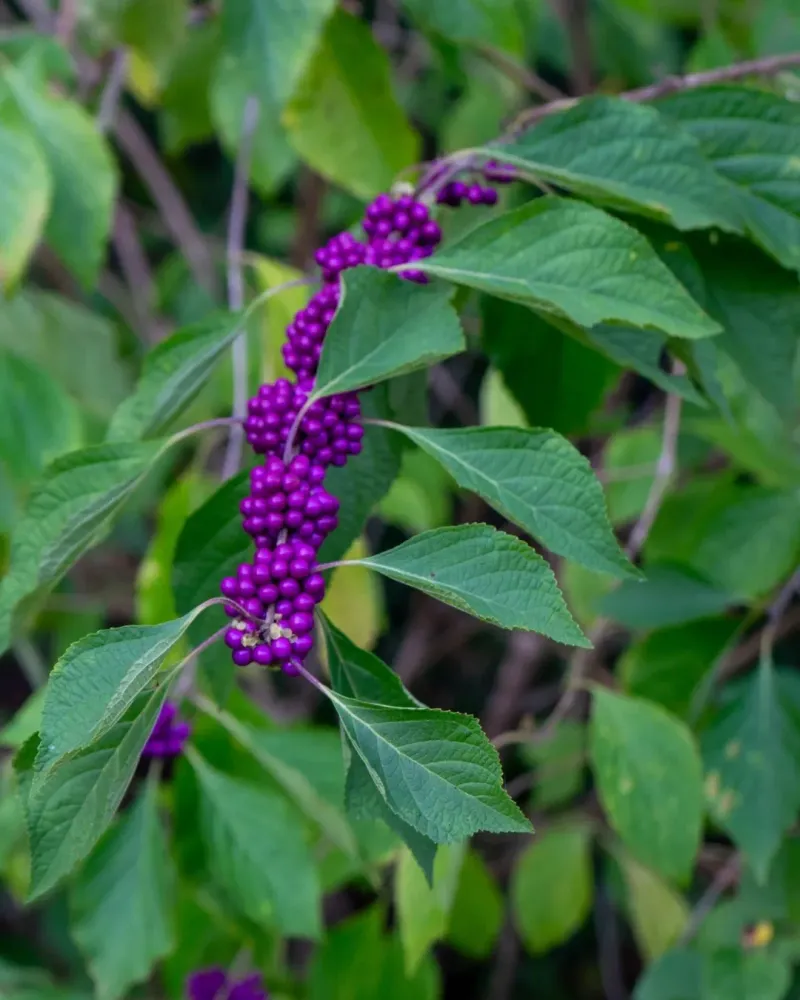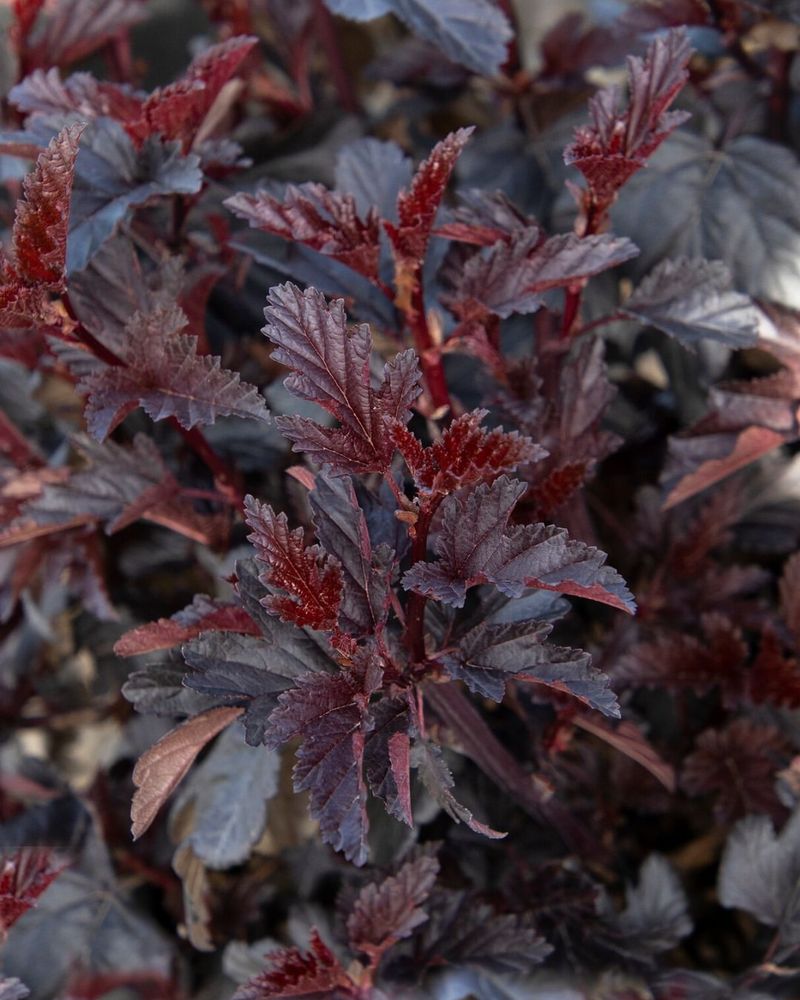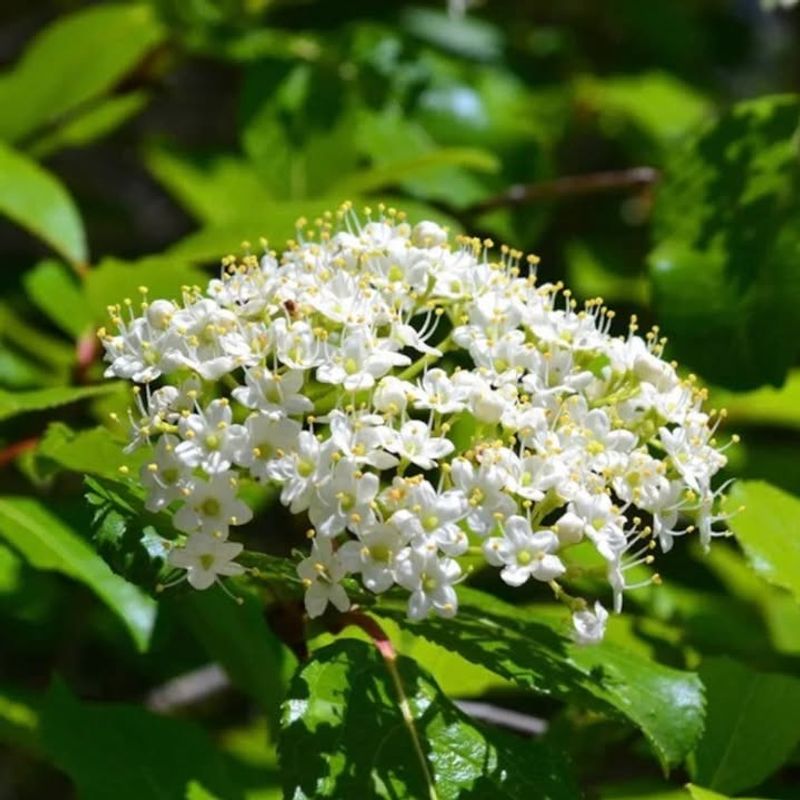Fall in Virginia brings cooler temperatures and stunning color changes throughout the landscape. While trees often steal the spotlight, shrubs play an equally important role in creating autumn beauty.
Planting the right shrubs can fill your garden with brilliant reds, oranges, purples, and yellows that last for weeks, making your outdoor space truly unforgettable during this magical season.
1. Burning Bush
Few shrubs can match the jaw-dropping crimson display of burning bush when autumn arrives. Its leaves transform from green to an intense, fiery red that practically glows in the landscape.
Growing about six to ten feet tall, this hardy shrub thrives in Virginia’s climate and tolerates various soil conditions. Plant it where you’ll see it daily because the color show is too spectacular to miss.
Keep in mind that some areas consider it invasive, so check local guidelines before planting in your yard.
2. Virginia Sweetspire
Native to Virginia, this adaptable shrub earns its place with stunning burgundy-red fall foliage and fragrant white flower spikes in spring. Virginia sweetspire handles both wet and dry locations with ease.
Reaching three to five feet in height, it works beautifully along stream banks or in rain gardens. The arching branches create graceful movement in the landscape throughout the year.
Deer usually leave it alone, making it a smart choice for gardens where wildlife browsing is a problem.
3. Oakleaf Hydrangea
With leaves shaped like oak tree foliage, this Southern beauty transitions to rich burgundy, bronze, and purple shades as temperatures drop. Large cone-shaped white flowers in summer fade to pink, adding interest before fall arrives.
Growing four to six feet tall, oakleaf hydrangea prefers partial shade and moist soil. The exfoliating bark provides winter interest after leaves drop.
Plant several together for maximum impact, creating a stunning focal point that changes with the seasons beautifully.
4. Fothergilla
Imagine a shrub that shows off yellow, orange, and scarlet all at once on the same plant. Fothergilla delivers exactly that, creating a spectacular multi-colored autumn display that rivals any tree.
Bottlebrush-like white flowers appear in spring before leaves emerge, offering two seasons of beauty. Growing three to six feet tall, it prefers acidic soil and partial shade.
This low-maintenance native shrub rarely needs pruning and resists most pests and diseases effectively.
5. Summersweet Clethra
Golden yellow foliage makes summersweet clethra shine in fall gardens, while its fragrant white or pink flower spikes attract butterflies and bees in summer. Native to Virginia’s coastal areas, it loves moist soil and tolerates shade.
Reaching four to eight feet tall, this shrub works perfectly in naturalized settings or formal borders. The upright growth habit creates nice vertical lines in the landscape.
Plant it near patios or walkways where you can enjoy the sweet fragrance during blooming season.
6. Spicebush
Bright yellow leaves signal fall’s arrival on this native Virginia shrub that smells spicy when you crush its twigs or leaves. Female plants produce red berries that birds absolutely love.
Growing six to twelve feet tall, spicebush thrives in shady woodland conditions where many shrubs struggle. It serves as the host plant for spicebush swallowtail butterflies, supporting local ecosystems.
The airy, rounded form blends naturally into informal garden designs and native plant landscapes throughout the region.
7. Chokeberry
Glossy leaves turn brilliant red, orange, and purple shades that seem to shimmer in autumn sunlight. Dark berries persist through winter, feeding birds when other food sources become scarce.
Both red and black chokeberry varieties grow well in Virginia, reaching three to eight feet tall depending on the type. They tolerate wet soil, drought, and various light conditions.
The adaptability and wildlife value make chokeberry an excellent choice for low-maintenance landscapes that support nature year-round.
8. Smooth Witherod Viburnum
Deep burgundy and wine-red hues develop on this native viburnum as fall progresses, creating a rich backdrop for other plants. Creamy white flowers in spring give way to blue-black berries that wildlife devours.
Growing five to twelve feet tall, smooth witherod viburnum adapts to wet or dry conditions. The upright, multi-stemmed form works well for screening or hedging purposes.
Plant it in full sun for the best fall color, though it tolerates partial shade reasonably well.
9. Beautyberry
Clusters of impossibly bright purple berries steal the show in fall, creating an almost unreal appearance against yellow-tinged foliage. American beautyberry is native to the Southeast and grows happily in Virginia gardens.
Reaching three to six feet tall, this shrub prefers partial shade and well-drained soil. The arching branches create an attractive fountain-like shape.
Cut it back in late winter to encourage bushier growth and more berry production for the following season’s spectacular display.
10. Winterberry Holly
Bright red berries cover the branches so thickly they almost hide the yellow fall foliage underneath. After leaves drop, the berry display continues well into winter, providing landscape color for months.
Female plants need a male pollinator nearby to produce berries, so plan accordingly when purchasing. Growing five to fifteen feet tall, winterberry prefers moist, acidic soil.
The vibrant berries attract dozens of bird species, turning your garden into a wildlife-watching paradise throughout the cold months.
11. Arrowwood Viburnum
Leaves shift through a rainbow of fall colors, displaying red, purple, yellow, and everything in between on the same plant. Blue-black berries add another layer of visual interest.
Native to Virginia, this tough shrub grows six to ten feet tall and handles various soil types. White spring flowers attract pollinators, making it valuable for wildlife throughout growing seasons.
The dense branching structure makes arrowwood viburnum excellent for naturalized hedges or privacy screens that change beautifully with seasons.
12. Blueberry Bushes
Beyond delicious summer fruit, blueberry bushes deliver spectacular scarlet and orange fall foliage that rivals any ornamental shrub. Both highbush and lowbush varieties provide stunning autumn color.
Growing two to six feet tall depending on variety, blueberries need acidic soil to thrive. Plant multiple varieties for better pollination and extended harvest periods.
The combination of spring flowers, summer fruit, fall color, and winter structure makes blueberries incredibly valuable for edible landscaping projects throughout Virginia.
13. Ninebark
Burgundy and bronze tones develop on fall foliage, while the exfoliating bark adds textural interest year-round. Cultivars with purple leaves during summer create even deeper fall colors.
Growing five to ten feet tall, ninebark tolerates various soil conditions and handles urban pollution well. White or pink flower clusters bloom in late spring, attracting beneficial insects.
The easy-care nature and multi-season appeal make ninebark perfect for busy gardeners who want maximum beauty with minimal maintenance effort.
14. Blackhaw Viburnum
Reddish-purple and bronze fall colors emerge slowly, creating a long-lasting autumn display that deepens as temperatures drop. Edible blue-black fruits ripen in fall, though birds usually claim them first.
Native to Virginia, blackhaw viburnum grows twelve to fifteen feet tall, working as either a large shrub or small tree. White spring flowers provide nectar for early-season pollinators.
The strong branching structure and adaptability to various conditions make blackhaw viburnum reliable for challenging sites throughout the region.

